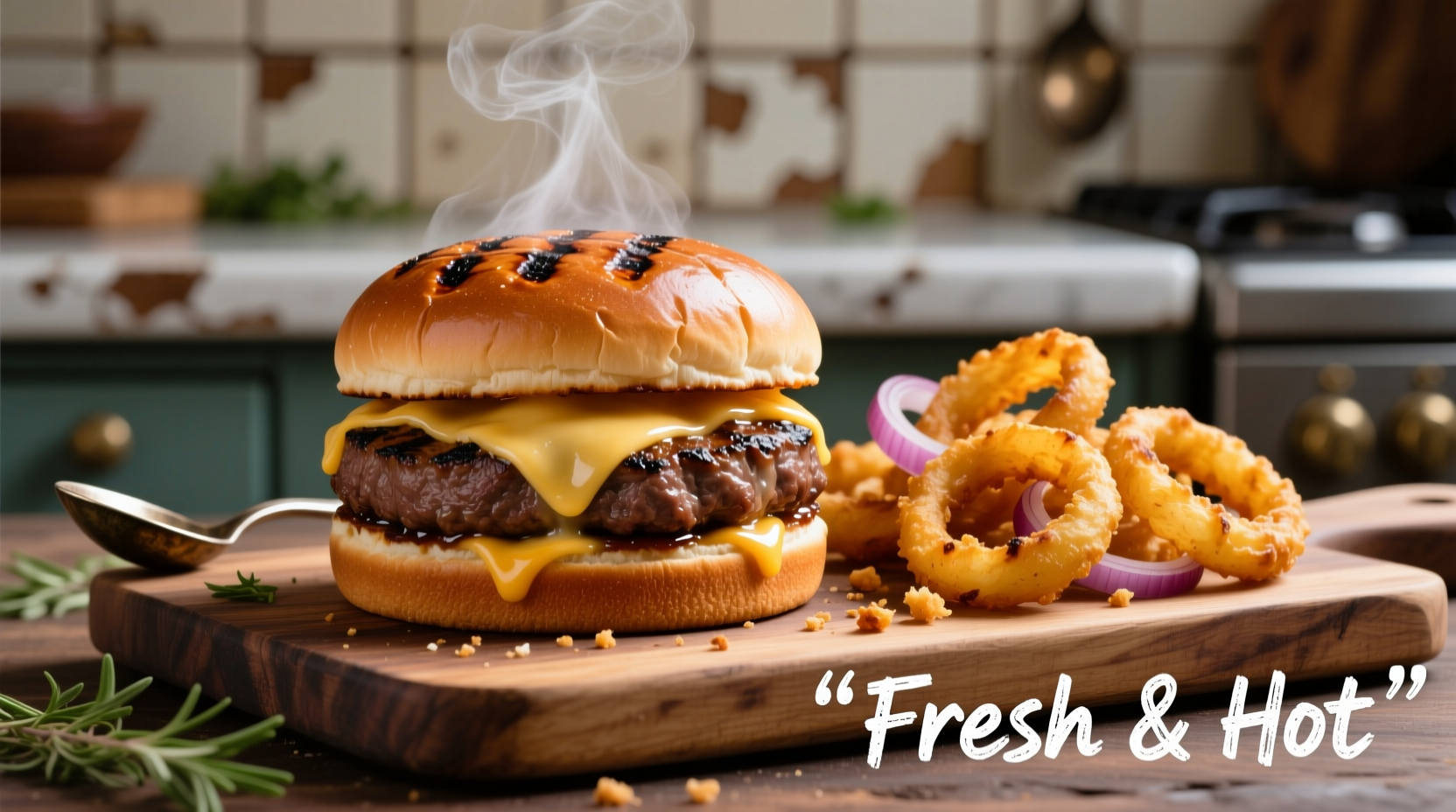The Enduring Appeal of America's Classic Comfort Pairing
When you're craving that perfect meal combination, few pairings satisfy like a well-made burger alongside crispy onion rings. This dynamic duo has dominated American menus since the mid-20th century, and understanding why they work so well together reveals fascinating insights about flavor chemistry and culinary history.
From Street Food to Mainstream Staple: A Culinary Timeline
The hamburger emerged from German immigrants in the late 19th century, while onion rings made their first documented appearance in a 1904 cookbook. Their paths converged during America's post-World War II restaurant boom when drive-ins and diners began featuring both items prominently.
| Era | Burger Evolution | Onion Rings Evolution |
|---|---|---|
| 1880s-1920s | German immigrants introduce "Hamburg steak" | First recipe appears in "The Boston Cooking-School Cook Book" (1904) |
| 1930s-1940s | Diners popularize the modern sandwich format | Commercial breading techniques developed |
| 1950s-1960s | Fast food chains standardize preparation | Becomes standard diner side dish nationwide |
| 2000s-Present | Gourmet variations emerge | Artisanal preparations with craft batters |
Why This Pairing Works: The Science Behind the Satisfaction
The magic happens through complementary flavor compounds. Beef contains glutamates that trigger umami receptors, while onions contain sulfur compounds that create sweetness when fried. When combined, they create a flavor synergy that enhances both components without overwhelming either.
According to research from the US Department of Agriculture, the Maillard reaction that occurs during burger cooking produces over 600 flavor compounds, while the caramelization of onions creates additional complex sugars that balance the savory notes of the meat.

Mastering the Perfect Preparation: Practical Techniques
For optimal results, follow these professional techniques that home cooks often overlook:
Burger Success Factors
- Maintain 20% fat content in your ground beef for proper juiciness
- Season patties generously with coarse salt 30 minutes before cooking
- Avoid pressing down on patties while cooking to retain juices
- Rest burgers for 5 minutes after cooking before serving
Onion Ring Excellence
- Use sweet Vidalia or Walla Walla onions for optimal flavor
- Chill onions for 30 minutes before slicing for cleaner cuts
- Maintain oil temperature at 375°F (190°C) for perfect crispness
- Serve immediately after frying to prevent sogginess
Common Pairing Pitfalls and How to Avoid Them
Even experienced cooks encounter these challenges when preparing this classic combination:
Temperature Conflicts
Serving hot burgers with cooling onion rings creates an uneven experience. Solution: Prepare onion rings in small batches just before serving, or use a holding oven at 200°F (93°C) for no more than 10 minutes.
Flavor Overpowering
Overly spicy burger toppings can overwhelm delicate onion ring flavors. Solution: Balance bold elements like pepper jack cheese with milder toppings like lettuce and tomato.
Texture Competition
Using thick-cut fries instead of onion rings creates competing textures. Solution: Keep the focus on the contrasting textures between the soft burger and crispy rings.
Serving Strategies for Maximum Enjoyment
For the ideal experience, serve your burger and onion rings with these considerations:
- Place onion rings on the side rather than on top of the burger
- Provide dipping sauces that complement both elements (try chipotle aioli)
- Serve immediately after preparation for optimal texture
- Consider portion ratios: 3-4 onion rings per burger maintains balance
When This Classic Pairing Might Not Work
While generally successful, certain contexts reduce the effectiveness of this pairing:
- With extremely lean turkey or veggie burgers that lack sufficient fat content
- When serving delicate fish burgers that pair better with lighter sides
- At formal dining occasions where more sophisticated pairings are expected
- For individuals with specific dietary restrictions like low-FODMAP diets











 浙公网安备
33010002000092号
浙公网安备
33010002000092号 浙B2-20120091-4
浙B2-20120091-4